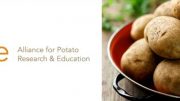|
Click to listen to this article
|
American youth between two and 19 years-old have the lowest measures of diet quality compared to other age groups;i and nutrition thought leaders have called for effective strategies to reverse this trend and improve adherence to dietary recommendations.
New Alliance for Potato Research and Education (APRE) funded research published in Nutrients finds that diets of 9–18-year-olds that include potatoes are linked to better diet quality compared to diets of non-potato eaters, regardless of how the potatoes are processed or prepared.
- Compared to no potato consumption, results showed that adolescent diets that included potatoes in any form (baked, boiled, mashed, in mixed dishes and fried) were associated with higher intakes of several essential nutrients and improved nutrient adequacy.
- Diets that included potatoes were higher in dietary fiber and potassium – two nutrients of public health concern.
Results
Adolescents who consumed baked, boiled, mashed potatoes or potato mixtures had a 4.7% higher diet quality score than non-consumers, and diet quality scores gradually increased with increasing potato intake.
Diet quality scores remained higher than non-potato consumer scores when fried potatoes or chips were added. Adolescents who included fried potatoes in their dietary recalls had a 2.0% higher diet quality score than non-consumers, while those who consumed potatoes in any form, including fries or chips, had diet quality scores 1.6% higher than non-consumers.
Regardless of the forms of potatoes eaten, adolescent potato consumers had better intakes of dietary fiber and potassium, two nutrients of public health concern.
Conclusion
Encouraging potato consumption by adolescents may be an effective strategy for improving intakes and adequacy of key nutrients, especially those of greatest public health concern.




